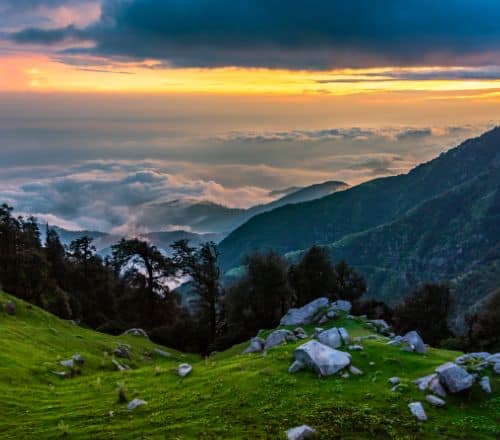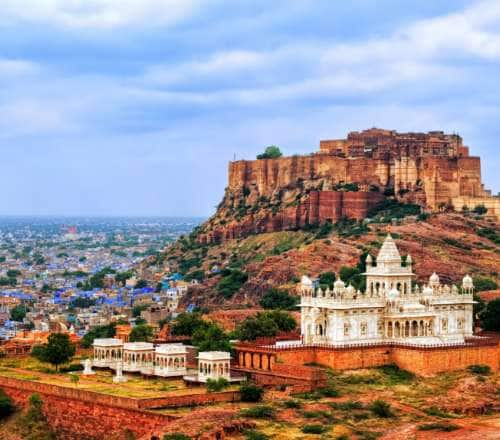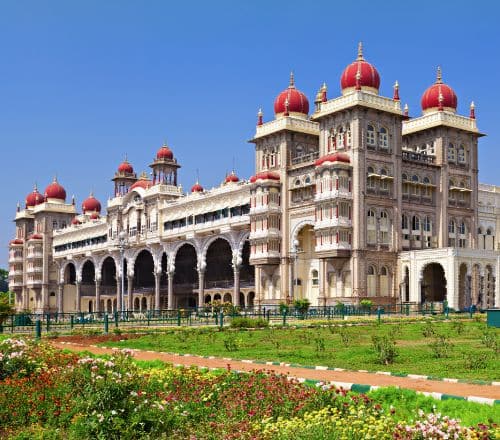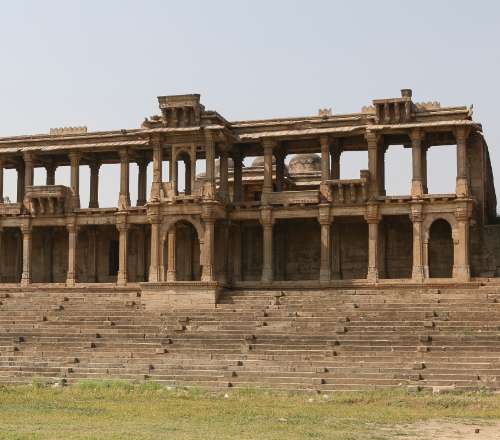Stay logged in to proceed with bookings, orders and offers.
On changing the terminal, you will loose items in your cart. Are you sure you want to change your terminal?
Unveiling the mystique of Sivasagar's pyramidal domes, where history and architecture converge!
Sivasagar is nestled amidst the lush greenery of Assam in northeastern India. The town stands as a living testament to the rich cultural heritage of the Ahom dynasty. As I set foot in here, I could feel the weight of history and its magnificence enveloping me. Let's learn about what makes Sivasagar an enriching getaway destination.
Read More
Read Less
Sivasagar, previously known as Rangpur, served as the capital of the Ahom Kingdom from the 13th to the 19th century. The Ahom dynasty ruled for over 600 years, one of the longest dynasties in the country. Needless to say, it left an indelible mark on the region's history and architecture. The pyramidal domes, also known as "Moidams", are shining examples of Ahom's architectural expertise and grandeur. These earthen domes are hemispherical mounds that served as sacred burial grounds for the Ahom kings and queens. The mounds are two-storied and are built over a vaulted chamber and passageway for access. Right at the top of the mound is a small crowning pavilion—a chow-chali. Each dome is a true work of art. As I gazed at the remarkable structures, I noticed the materials they were built with—bricks and soil. Yet, the domes have withstood the test of time. This is evidence of the architectural brilliance of their creators
As mentioned, these domes were used to bury the dead. Just as in the case of their Egyptian counterparts, the dead were buried with many valuable items. But these majestic domes were more than just final resting places. They stood as everlasting tributes to the contributions of these rulers to the prosperity and stability of the kingdom. Can you imagine the honour and respect bestowed upon these magnificent structures? I was fascinated by the way these domes blended both architectural magnificence and a deep spiritual essence. It was like stepping into a different world altogether, where history, culture, and faith came together in perfect harmony.
As I explored the city, I discovered many architectural marvels that left me in awe. Let me tell you about some of them.
One such gem was Rang Ghar, Asia's first amphitheatre, built by King Pramatta Singha of the Ahom kingdom. It was designed as a fun place for the royal family to watch outdoor games. I could imagine how exciting it would be to watch a bullfight or a game of wrestling here! It's a rectangular building with two floors and was built around the year 1745. The roof is big and shaped like a shell. It also has a cool model of a boat on top and three small towers in the middle. This impressive structure stands testament to the grandeur and sophistication of Ahom architecture.
Another architectural gem that captured my curiosity even more was the Talatal Ghar. This is a multi-storied palace with underground tunnels and chambers. The building is constructed in a straight line from north to south, with long sections at both ends and in the middle. The first floor is supported by columns and stylobates, and there are two staircases you can use to climb up to it. There is a fancy staircase at the front and another narrower one around the building. The intricate maze of tunnels served both defensive and strategic purposes, so that the Ahom rulers could navigate their palace discreetly.
One cannot miss Joysagar Tank. This one is an artificial lake created by the Ahoms. This tranquil spot provides a serene setting where one can relax and admire the beauty of the surroundings. King Rudra Singha (AD 1696 -1714) built the Devi Dol Temple near Rangpur, on the western side of Joysagar Tank. The temple is dedicated to the Goddess Durga. It looks similar to a traditional Assamese hut with two sloping roofs. The outside walls are covered with lime and surkhi plaster. The remaining foundation and parts of the walls of the assembly hall (mandapa) and inner sanctum (garbhagriha) suggest that bricks were used in building the temple.
Beyond the architectural wonders, Sivasagar in itself is a gem. Serene temples dot the landscape, showcasing the region's spiritual heritage. The vibrant markets buzz with energy. The town's tree-lined avenues offer a serene ambience, inviting strolls and peaceful moments of reflection. What truly made my experience memorable was the warm hospitality of the locals. The people of Sivasagar are known for their welcoming nature and eagerness to share stories and anecdotes about their beloved town and its rich historical significance. Engaging in conversations with them allowed me to gain a deeper appreciation for the place and its cultural heritage.
In recent years, there have been concerted efforts to promote Sivasagar as a cultural and heritage destination. The local administration along with tourism authorities have organised festivals and events that celebrate the rich legacy of the Ahom dynasty. There are over 150 such domes in the area, but only 30 remain protected. There are efforts by the Government of India to have it recognised as a UNESCO World Heritage Site. These initiatives not only draw in tourists but also imbue the younger generation with a sense of pride and awareness. It is through these endeavors that they learn about the significance of safeguarding their cultural heritage.
The pyramidal domes of Sivasagar stand tall as a magnificent testament to the architectural brilliance and cultural legacy of the Ahom Dynasty. If you're a history buff and are drawn to the beauty of architectural marvels, the pyramidal domes of Sivasagar should be at the top of your travel getaway list. It's a chance to witness the brilliance of the Ahom Dynasty and immerse yourself in the stories and traditions that have shaped this extraordinary place. Sivasagar awaits, ready to charm you with its sublime architecture, warm hospitality, and the magic of a time, long gone.





The Adani One expressly disclaims all liability, direct and indirect, in respect to actions taken or not taken based on any or all the contents of this Blog. The Blog is an opinion of the contributor based on the collation of data from various sources and is provided only for information purpose. Adani One does not canvass, advertise, solicit, invite or induct for any product, merchandise, information, brand or any other materials mentioned in the Blog, nor does it obtain any monetary benefit from the same. Reader is advised to read and apply his/her intellect and discretion in this regard. Any Intellectual Property mentioned in this blog belongs to the rightful owner. We do not intent to claim any interest over the same.